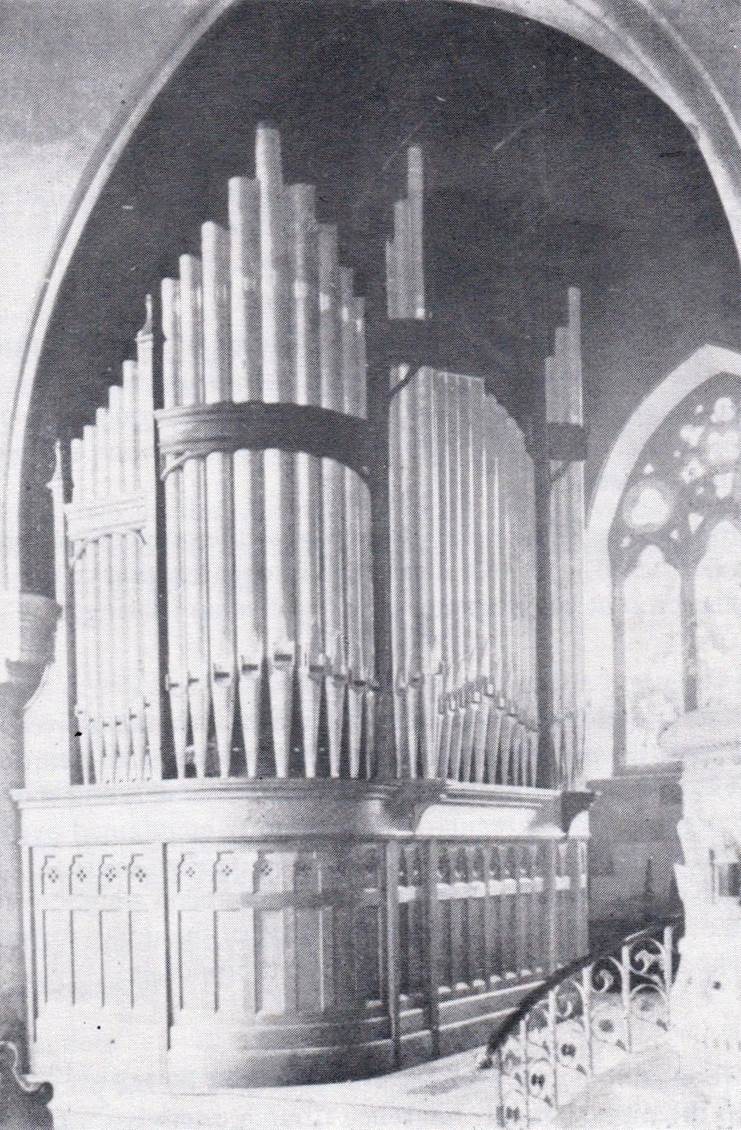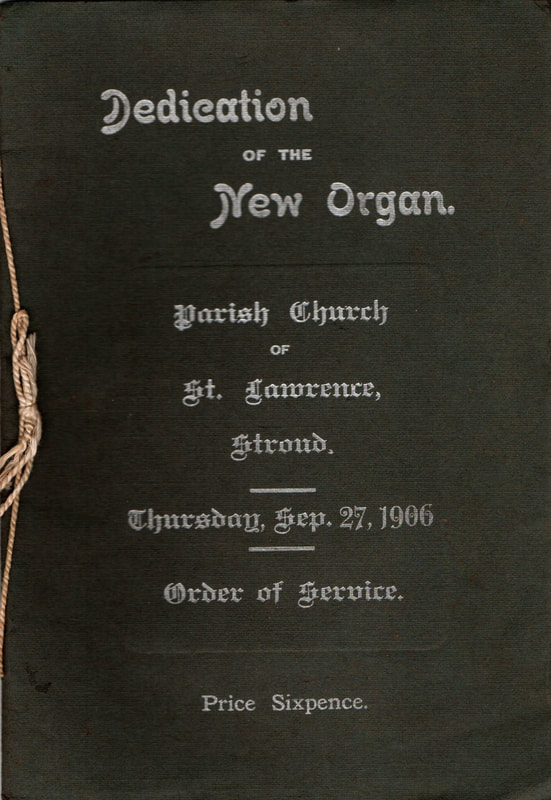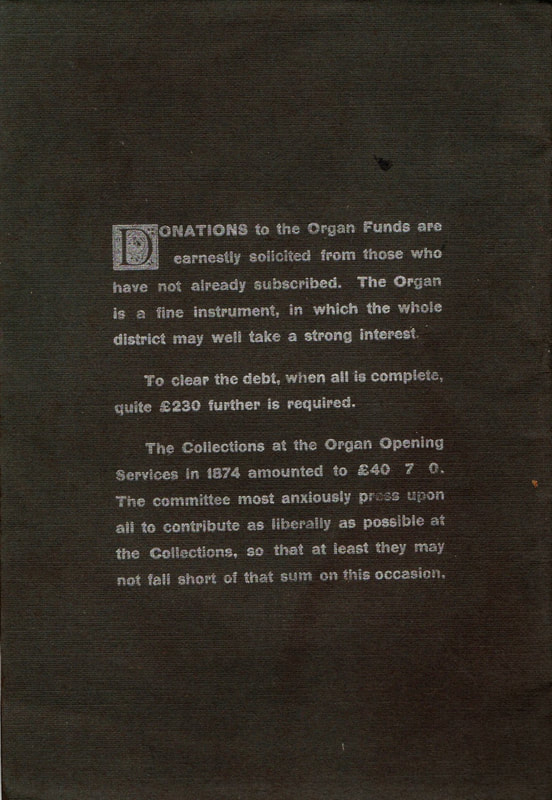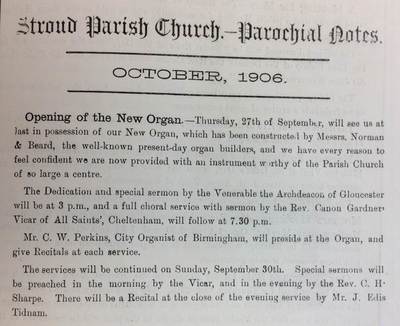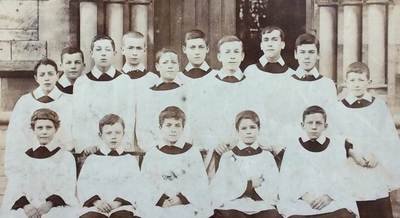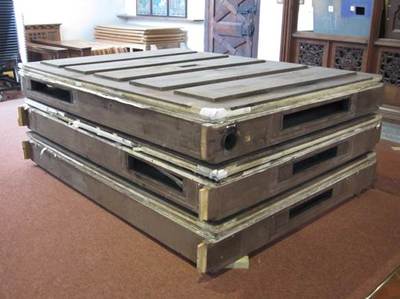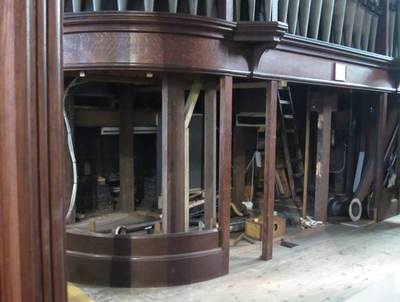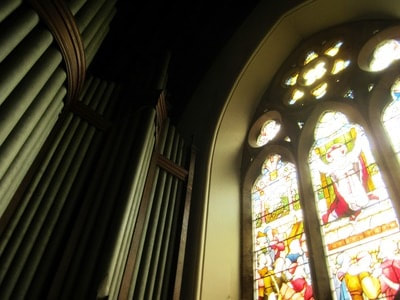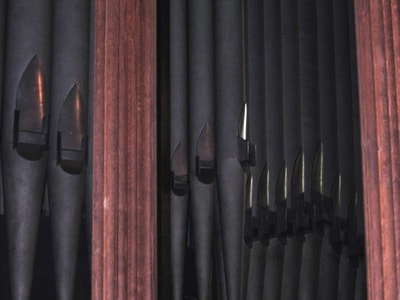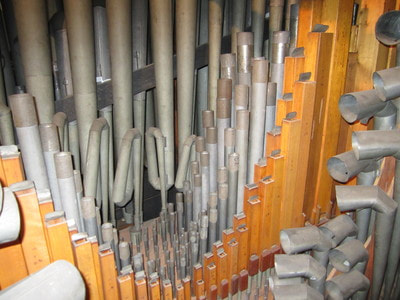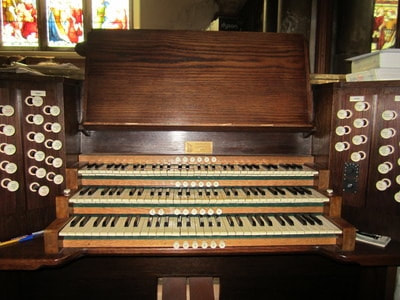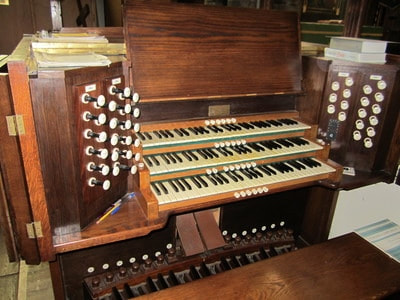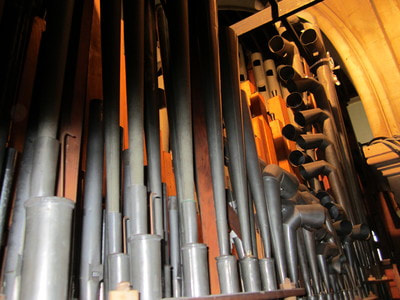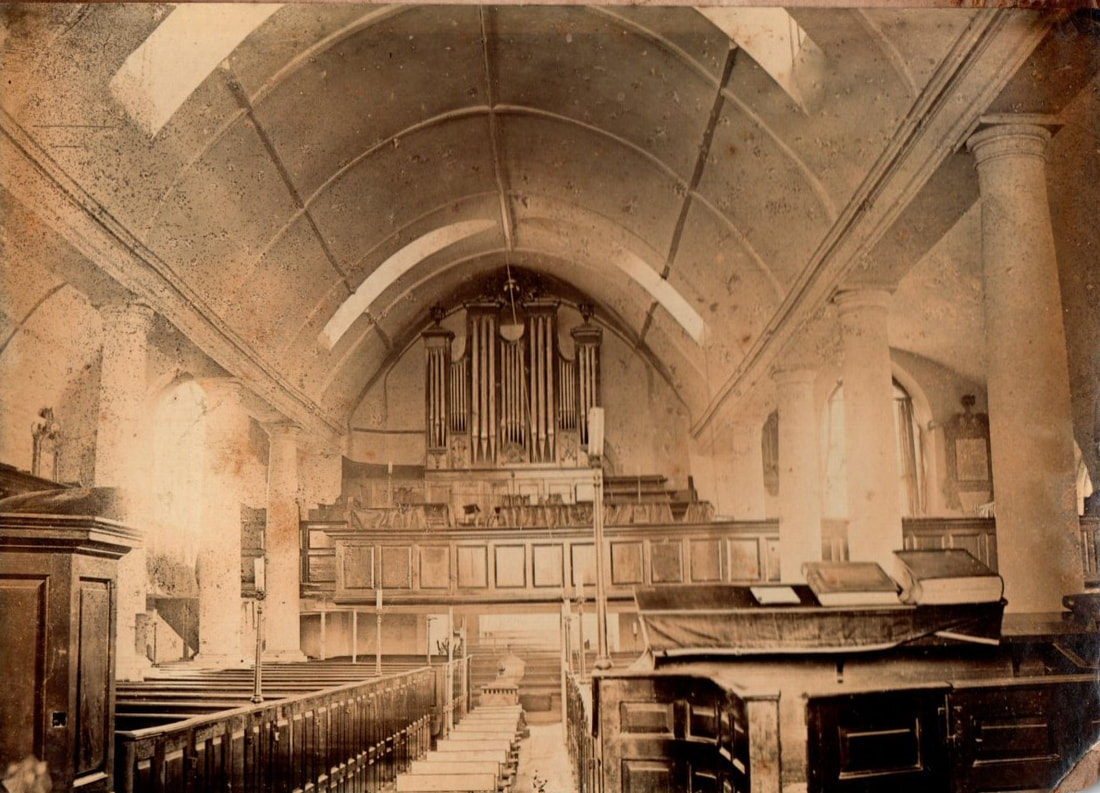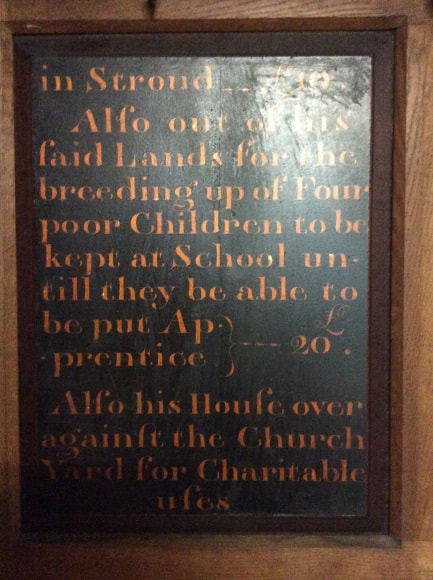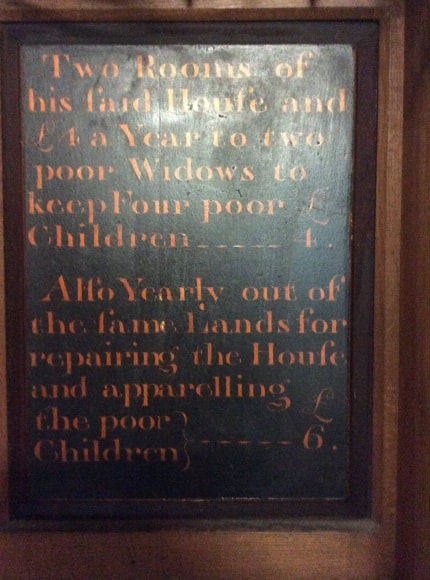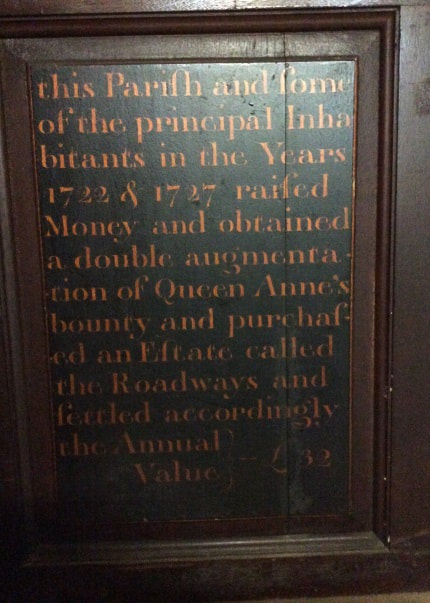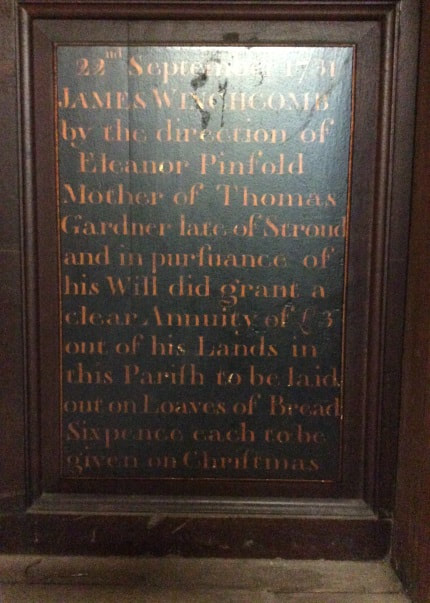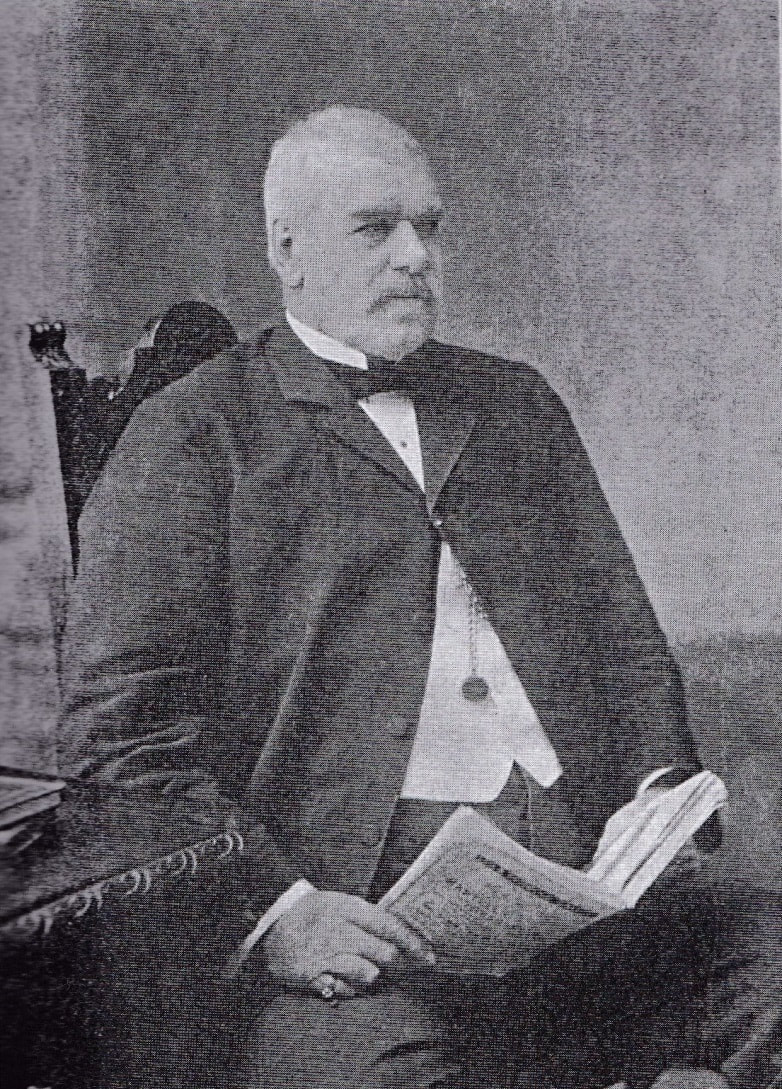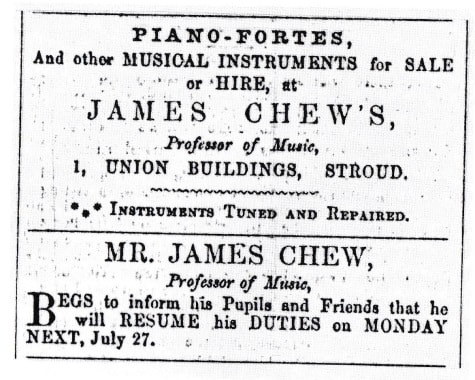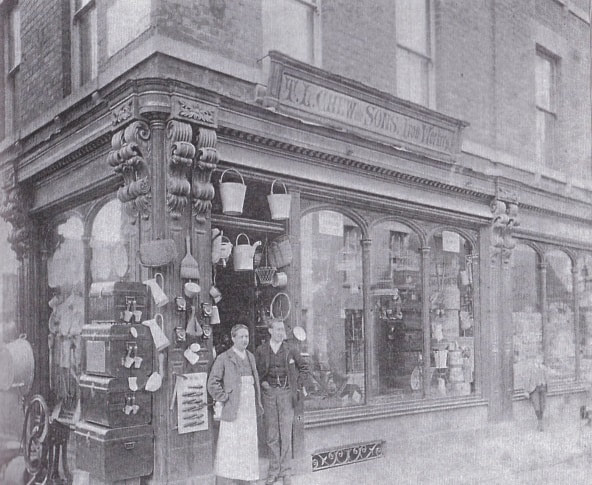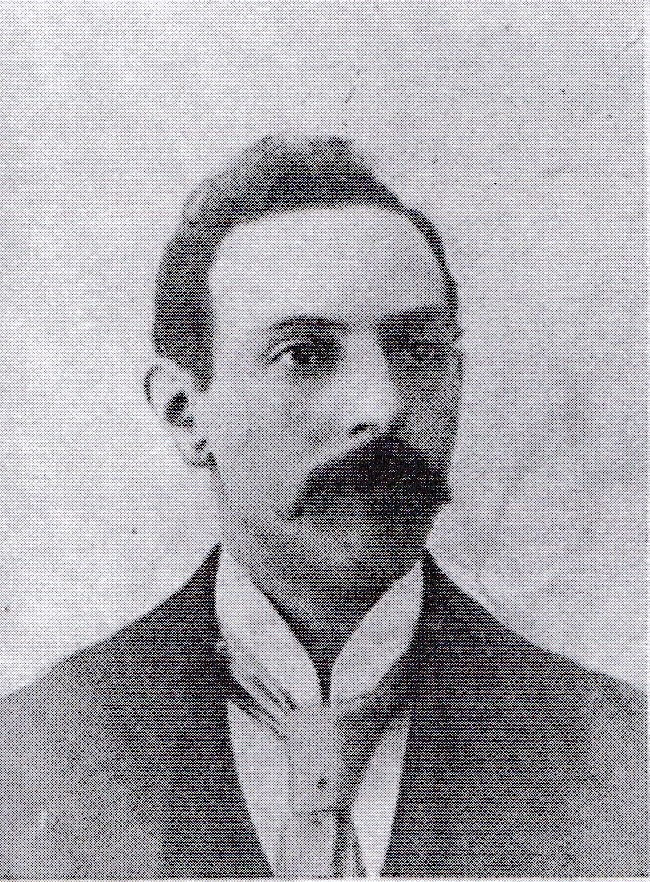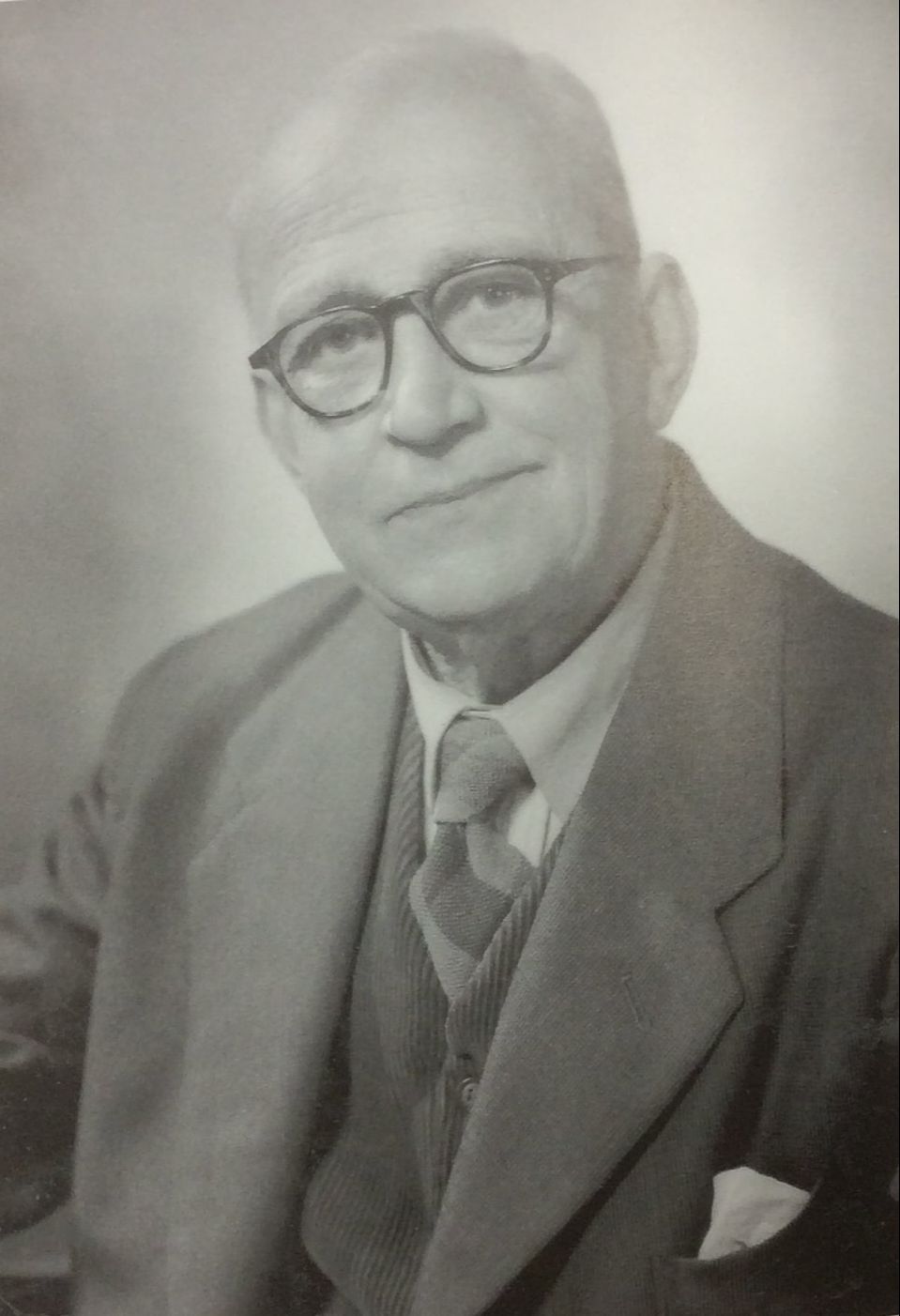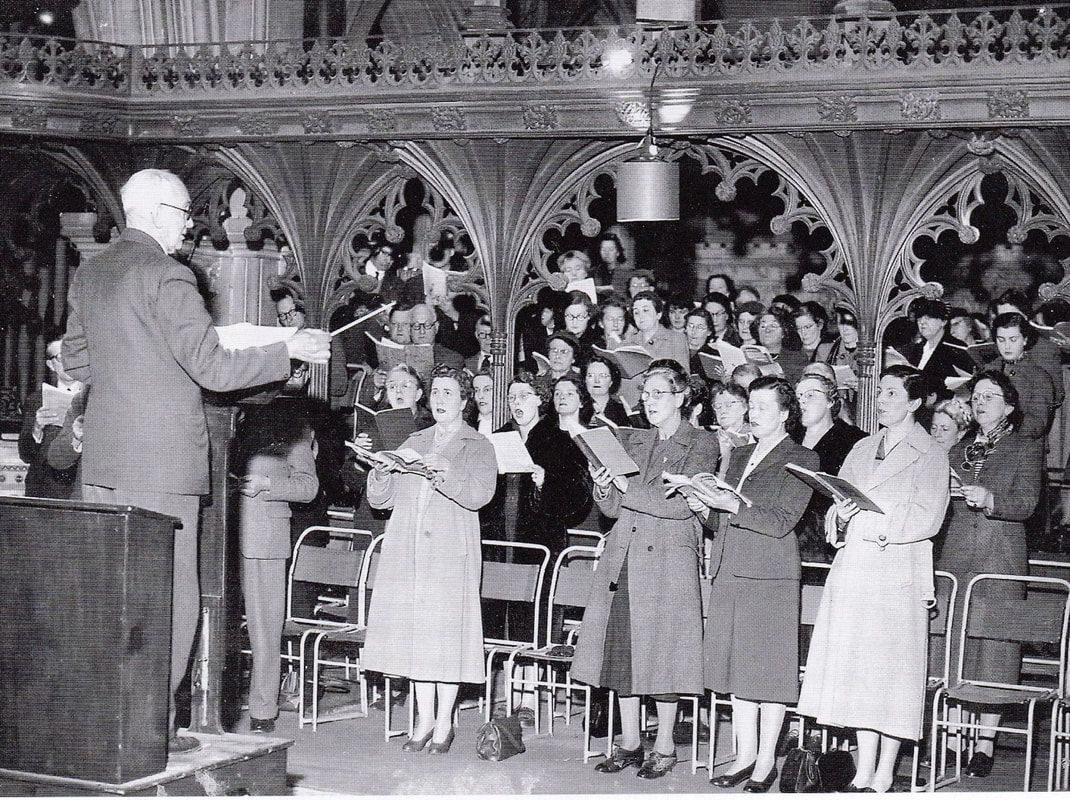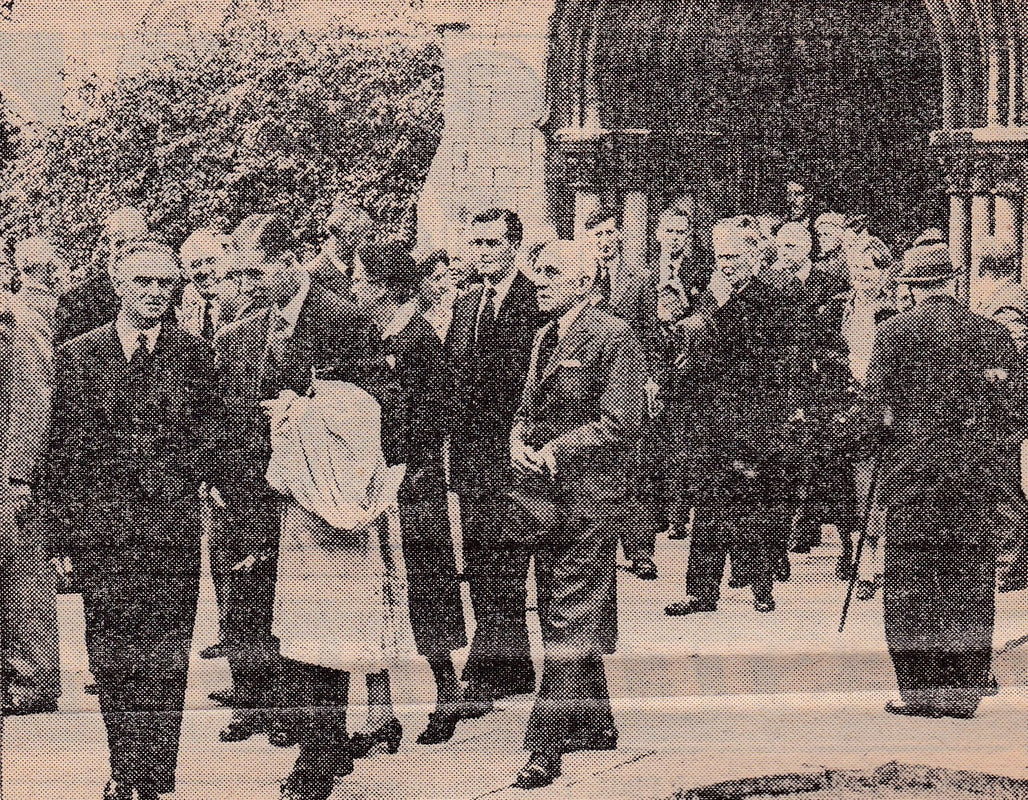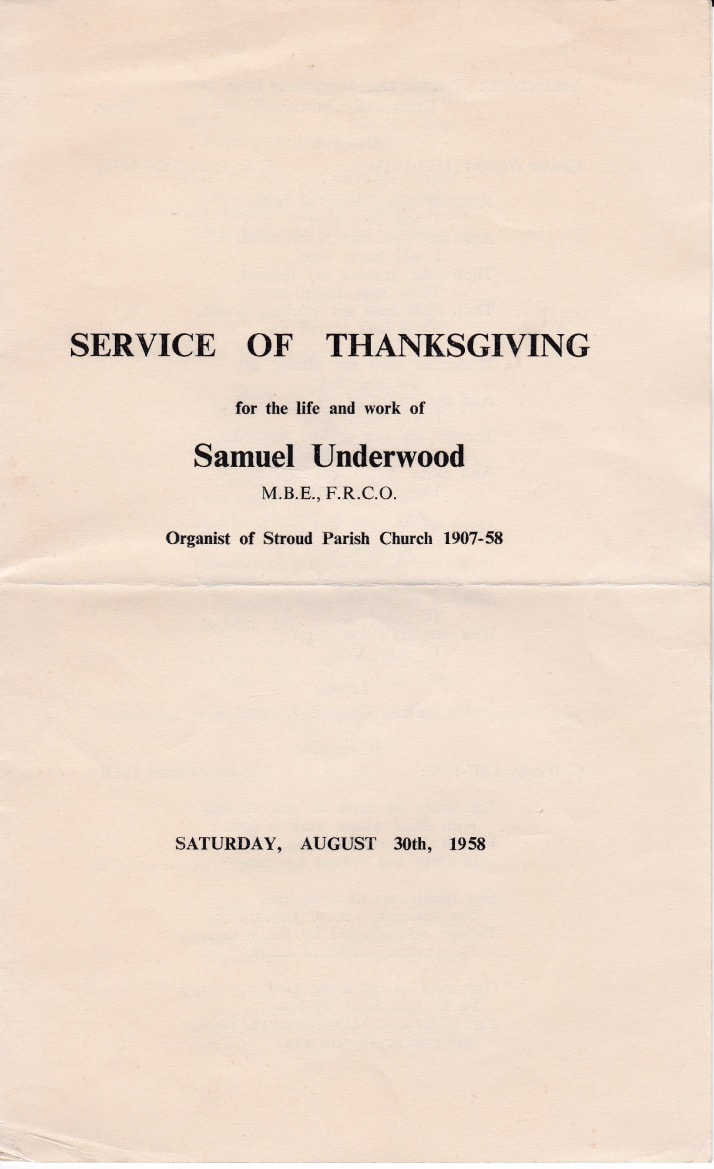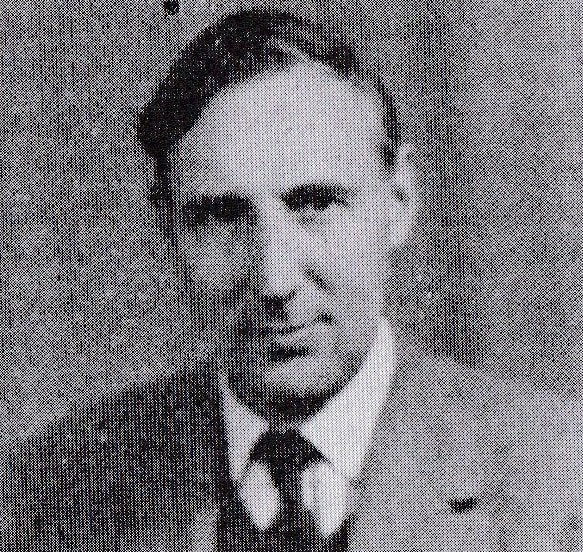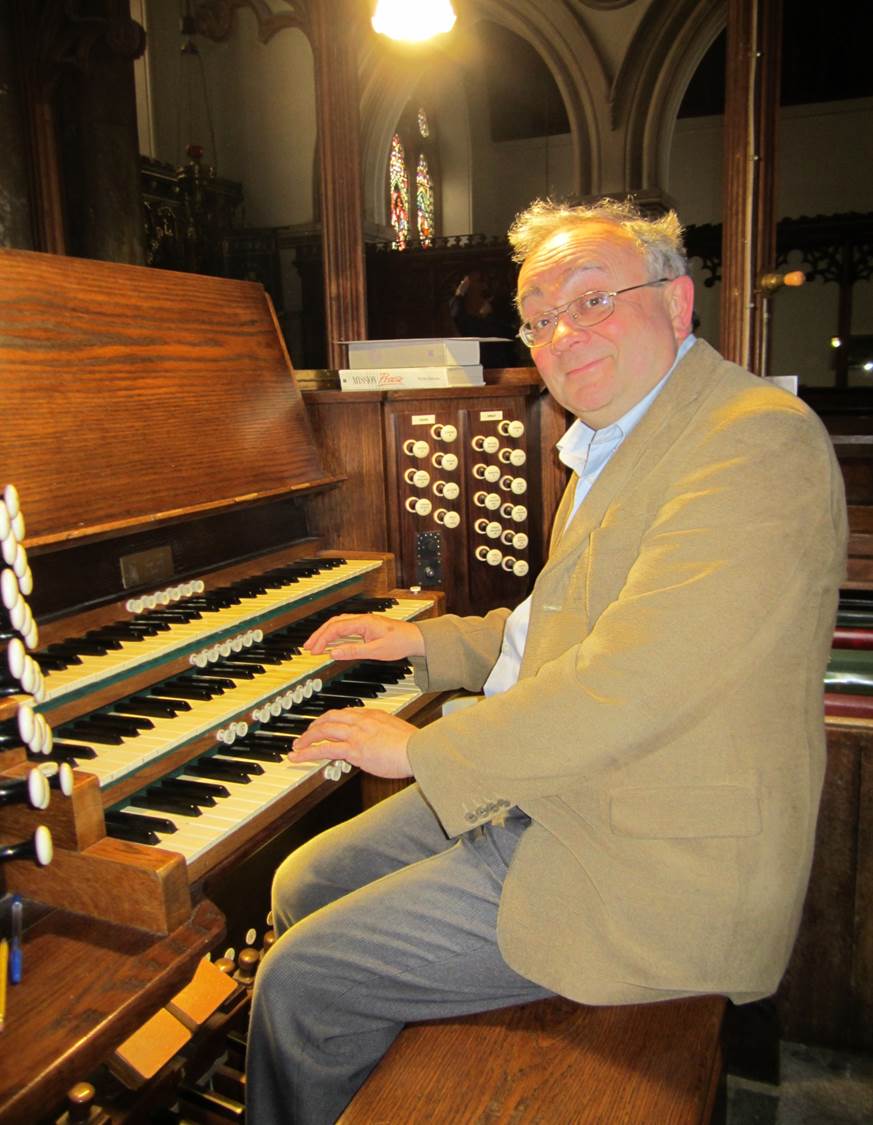The Church Organ
The Current Organ
The current church organ is a fine three-manual instrument built and installed by Norman & Beard of Norwich in 1906, to a specification by Dr Charles Harford Lloyd. It replaced the original organ which had been installed by John Avery of Westminster in 1798. It was subject to a major refurbishment in 1996, when it was converted to an electro-pneumatic action. In 2016 further work was done to repair the bellows.
Alfred T Ford's photograph of the new church organ in 1906
Above left: The opening of the new organ from the Parish Magazine, October 1906
Above right: St Laurence choir boys, 1920s
Above right: St Laurence choir boys, 1920s
Repairs to the current organ's bellows, April 2016
The Original Organ
The original church organ by John Avery of Westminster had been installed on 18th April 1798 in a gallery at the west end of the nave, and this was considered a great event in the annals of Stroud. William Ellis, the officiating curate, recorded it in the parish register:
Gertrud Mara (1749-1833) was a celebrated German operatic soprano, who was performing that same year at Covent Garden in London.
The original organ installed in its gallery at the west end of the nave
Oak panels from the old organ gallery, inscribed with a record of the original benefactions; removed when the new church was built 1866-1868, and used to line the walls and cupboard insides of the new vestry
Church Organists
James Chew (1828-1899) was a local man who was appointed organist at Chalford Church at the age of just 14. Eventually devoting himself fully to music, he opened a music shop in Stroud, and was appointed organist and choirmaster at St Laurence on Christmas Day 1851. He led the band at Stroud Choral Society concerts for many years.
LEFT: James Chew, from Stroud Journal, March 1899
CENTRE: Advert from Stroud Journal, 25 July 1857
RIGHT: TL Chew & Sons shop, corner of King Street and Bath Street, Stroud, late 19th century
CENTRE: Advert from Stroud Journal, 25 July 1857
RIGHT: TL Chew & Sons shop, corner of King Street and Bath Street, Stroud, late 19th century
|
Thomas Hackwood was buried in Stroud Cemetery on the 15th March 1902 aged just thirty-nine years old, having suffered from ‘emphysema and gangrene of the lung’. He was a Fellow of the Royal College of Organists and was the organist at Stroud Parish Church and conductor of the Stroud Choral Society from 1899. He was a musical prodigy, studying music from a very early age and he was only eleven years old when he was appointed organist of the Church of St Paul, Jarrow-on-Tyne (this was prior to his move to Gloucestershire), a position he held for six or seven years. At the age of eighteen he came to Gloucester as the pupil of Dr Lloyd, who was the organist at Gloucester Cathedral. In addition to his professional duties, Thomas Hackwood collaborated with Sidney Cubitt in writing comic operas, which were performed at the Subscription Rooms.
|
Samuel William Underwood was famously Organist of St Laurence and Conductor of Stroud Choral Society between 1906 and 1958, being awarded an MBE in 1957 for his contribution to music in the West Country.
Remembrance Service for Samuel Underwood, 30 August 1958
John Denton, was organist and choirmaster from 1961. He was tragically killed in a car crash in March 1985.
|
Our current organist and Director of Music is Christopher Boodle. Christopher was born in Gloucester in 1952 and received his musical education at New College, Oxford, and the Royal College of Music in London. During his student years he gained the A.R.C.M. and F.R.C.O. diplomas, in addition to receiving first prize in the Incorporated Association of Organists Competition in 1974. For six years he lived in Belfast, Northern Ireland, combining the post of Assistant Cathedral organist with teaching and conducting a choral society. In 1983 he moved back to England.
|
